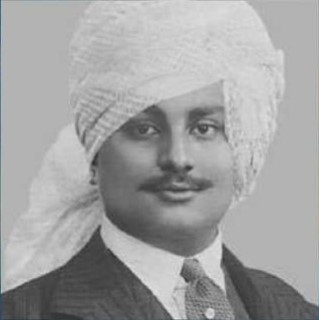Early Life
Kameshwar Singh Bahadur was born on 28 November 1907 in Darbhanga, in north Bihar. He succeeded the seat of Raj Darbhanga on the demise of his father, Rameshwar Singh Bahadur. As was the fashion of the time for the aristocratic class, he was tutored at home by an English lady.
The Raj Darbhanga was the largest landed estate in the states of Bihar and Orissa, giving the ruling zamindars a status equivalent to that of the middling princely states. Singh succeeded his father in becoming the biggest landholder in Bihar and Orissa. He was elected as President of the Bengal Landholders Association in August 1929.
Role in India’s Independence Movement
Singh was also the President of the British Indian Association in Calcutta. This was one of the early forums for political action among Indians, but thoroughly dominated by the landholding or zamindari class. At the young age of 23, he was invited to attend the Round Table Conferences in London, which discussed the constitutional future of British India.
Contribution to Constitution Making
Singh was elected to the Constituent Assembly from Bihar as an Independent. He was not an active participant in the debates, but did speak strongly in support of Prime Minister Nehru’s decision to join the Commonwealth. He ardently advocated for equitable compensation to persons who will be negatively affected by the abolition of the zamindari system.
Later Contributions
Kameshwar Singh was elected to the Rajya Sabha in 1952 on a Jharkhand Party ticket. He gifted his Anand Bagh Palace to start a Sanskrit university, known today as the Kameshwar Singh Darbhanga Sanskrit University.
Soon after the Constitution came into effect, Singh challenged the Bihar Land Reforms Act, which aimed at dismantling the Zamindari system and instituting land reforms. The Act was declared unconstitutional under Article 14 by the Supreme Court. This judgment was one of the factors that led to the passing of the Constitution (First Amendment) Act, 1951, which inserted Article 31A into the Constitution, allowing the State to implement its land reform agenda.
Singh also contributed 120,000 acres of land to Acharya Vinoba Bhave’s Bhoodan campaign in 1953.
He passed away on 1 October 1962.
Key Writings
- On 17 May 1949, Kameshwar Singh spoke strongly in favour of ratifying India’s membership of the Commonwealth, arguing that it would not compromise on India’s sovereignty, and that India couldn’t afford to be isolationist in this day and age.
- On 12 September 1949, Kameshwar Singh defended the zamindar’s rights to be adequately compensated for the land redistribution programme to be implemented by the State.
- The Feudatory and Zemindari India, Vol. 9 No. 1 (East and West Ltd., 1929)
- Courage and Benevolence – Correspondence and Speeches of India’s Prime-estate Holder Maharajadhiraja Kameshwar Singh (1907-1962) (Maharajadhiraj Kameshwar Singh Kalyani Foundation, 2007)
- Bureaucracy and Control in India’s Great Landed Estates: The Raj Darbhanga of Bihar, 1879 to 1950 by Stephen Henningham (Modern Asian Studies, 1983)

